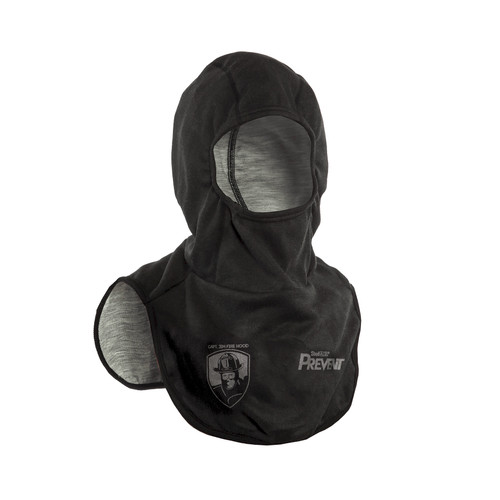Details
Captain Jim Prevent Particulate Hood
If you’re concerned about thermal protection, the Captain Jim Fire Hood is an elite choice! With a long-standing reputation for superior TPP and THL performance, this hood is sure to make you a loyal fan.The Captain Jim Particulate Blocking Hood takes all the features firefighters have come to appreciate in the classic hood design and cranks up the protection with filtration technology that helps to reduce your exposure to persistent, and potentially-harmful fire ground carcinogens.
- Made with 1 outer layer of 6 oz Spentex and 1 inner layer of Stedair® PREVENT
- Protection against the dangerous cancer-causing particles
- Thermal protection from burns
- High Total Heat Loss, resulting in superior comfort and protection from heat stress.
- Certified to NFPA 1971.
- Built for durability
- One size fits all
- Maintains 99.9% filtration efficiency after 100 wash/dry cycles.
H41 Interceptor particulate blocking hoods reduce firefighters’ exposure to persistent fireground carcinogens and other contaminants.
Known today as the Capt. Jim Fire Hood, Kevin F. O’Donoghue, an FDNY firefighter for 25 years, named the hood in honor of his father, James J. O’Donoghue, who was a Captain in the FDNY and served for 34 years. O’Donoghue had the idea to create a safer, more comfortable hood with superior thermal protection without diminishing a firefighter’s awareness of sudden environmental changes. The Capt. Jim Fire Hood is built for intense heat conditions with an initial TPP of 29.5 and an Arc Thermal Performance Value (ATPV) rating of 34, meaning it can withstand 34 calories of heat per square centimeter.
Today’s structures are loaded with components that contribute to rapid high heat build up and flashover potential. Energy efficient windows do not fail as quickly as the old single pane windows did. This allows for a high heat build up in each room. The expanded use of plastics and synthetics in our furnishings and structural components also provides fuel for an extremely hot and toxic fire. When you add these factors to an encapsulated firefighter you can see the potential for sudden and disastrous incidents.”
WARNING
This product contains PFAS chemicals which are used for Thermal Stability and Improved Durability
For more information, go to https://www.epa.goc/pfas.















